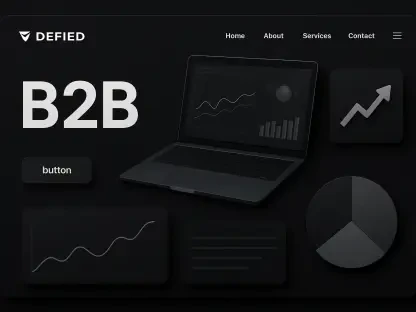Audiences asked for more video, marketers doubled down, and the data now points in one direction: short clips win attention at scale while deeper formats close deals, delivering the rare combination of growth in reach and growth in ROI that most channels fail to sustain when competition intensifies and budgets tighten.
Why This Market Matters Now
Video sits at the center of digital behavior and brand strategy because it owns both time and intent. Most marketers already use it and consider it essential, and most consumers prefer it for learning and evaluating. That alignment is unusual in marketing; it means demand and supply reinforce each other rather than creating diminishing returns. As bandwidth share tilted heavily toward video and platforms surfaced more video-first inventory, marketers shifted portfolios to match where attention lives.
This analysis examined adoption levels, consumer preferences, format performance, platform roles, production models, and measurement practices to map how value is created and captured. The goal is not to rehash well-known popularity trends, but to isolate what actually moves revenue: the mechanics that make short-form an acquisition engine, the contexts that make long-form convert, and the operational choices that compound returns over time.
The stakes are plain. Marketers reporting positive ROI are now the norm, not exceptions. Sales lift, lead gains, and higher conversion rates follow disciplined execution and measurement rigor, not just more output. The market has matured from “make video” to “make the right video, place it in the right channel, and prove what it did.”
Demand, Adoption, And The Economics Of Attention
Consumer appetite remains durable: a large majority want more brand video, and most say video influenced a purchase. People spend significant weekly hours watching online video, and daily YouTube usage underscores why it anchors discovery and education. This depth of consumption drives compounding network effects: more watch time begets better recommendations, which begets more watch time.
On the marketer side, adoption stabilized at a high base, with importance scores near universal. Budgets skewed toward increases, especially for short-form, while teams trimmed experiments that failed to connect to outcomes. Positive ROI reports climbed over the decade and now sit firmly above nine in ten, supported by measurable gains in sales, leads, and on-site engagement.
Economically, video outperforms many formats because it lifts multiple levers at once: higher click-through rates on paid and owned placements, longer time on site, richer qualification signals, and more share-driven reach. Sites with video enjoy meaningfully higher organic engagement and are far more likely to rank prominently, which lowers effective acquisition cost over time.
Format Dynamics: How Length Maps To Jobs-To-Be-Done
Short-form dominates the top of the funnel because it thrives in crowded feeds and mobile habits. Sub-60-second clips post the strongest engagement rates, are widely preferred for product discovery, and get shared far more than text and links combined. The creative grammar—strong hooks in the first seconds, vertical framing, captions, and sound-off design—matches how people scroll and evaluate in the moment.
However, the same strengths that make short-form addictive limit its ability to resolve complex questions. Completion is high, but nuance suffers. That is why the most resilient programs use shorts as invitations that route to richer assets. When brands build systematic handoffs—clip to explainer, reel to demo, short to live Q&A—attention converts into qualified intent.
Long-form wins where context and consequence matter. Play rates and conversions rise in environments where viewers self-select: webinars, deep-dive demos, and tutorials. In those settings, even 60-plus-minute sessions can outperform shorter options on conversion rate because the audience already opted into depth. Video’s cognitive advantage—higher retention versus text—amplifies this effect, especially for technical categories, regulated products, or multi-stakeholder purchases.
Platform Landscape And Audience Behavior
YouTube remains the control point for durable discovery and education. It pairs a massive user base with strong search behavior and long-session consumption, making it ideal for explainers, tutorials, and evergreen content. It also serves as a repository that other platforms can reference, creating a backbone for syndication and SEO.
Instagram and TikTok power cultural velocity and rapid reach. Even with lower marketer preference for TikTok in certain industries, these short-form engines drive outsized awareness, product discovery, and creative testing. Winning teams treat them as laboratories for hooks, messages, and visual systems, then scale what lands into mid- and long-form pillars.
LinkedIn’s importance in B2B cannot be overstated. Video there supports thought leadership, pipeline nurturing, and event promotion. Facebook still provides meaningful reach for specific demographics and community groups. Across platforms, mobile dominates viewing, which cements the need for vertical formats, responsive subtitles, and immediate value delivery within the first seconds.
Production At Scale: In-House, Partners, And AI As The Multiplier
Production models shifted toward hybrid teams as volume needs rose and skills diversified. Some brands reduced fully in-house footprints in favor of flexible partnerships for motion graphics, localization, compliance, and advanced post-production. This mix lets teams move fast without sacrificing polish where it matters.
AI now underwrites speed, accessibility, and versioning. Most practitioners use it for captions, transcripts, clip extraction, scripting assistance, and formatting across platforms. The result is shorter cycle times from shoot to publish, higher accessibility by default, and more variations per concept. Yet the differentiator remains human: narrative craft, brand guardrails, claims accuracy, and ethical checks protect trust.
Operational discipline separates leaders from laggards. High performers standardize briefs, shot lists, and approvals; they instrument assets with UTMs and CRM hooks; they schedule repackaging windows so every webinar becomes dozens of clips, audiograms, and highlight reels. The compounding effect is real: the same creative spend yields more surface area and stronger measurement.
Measurement, SEO, And The Economics Of Distribution
Clarity on metrics prevents false positives. Engagement signals—view-through rate, average watch time, completion—are necessary but insufficient. Outcome metrics—qualified lead rate, pipeline velocity, assisted conversions, incremental revenue—validate whether a format and placement justified spend. Leaders report by funnel stage and context, not channel averages that hide intent differences.
Video SEO is no longer optional. Chapters, transcripts, and structured data expand search visibility and improve usability. As search surfaces more video modules, assets that are navigable and scannable win clicks and longer sessions. This supports both organic reach and conversion-led journeys from high-intent queries to in-depth content.
Distribution economics favor portfolios over platform sprawl. Anchoring long-form on YouTube, seeding shorts across TikTok/Instagram/Shorts, and leveraging LinkedIn for B2B creates role clarity. Matching calls to action to the mindset of each environment—subscribe or watch next on YouTube, learn more or sign up from a webinar clip on LinkedIn, tap-through product highlights on Instagram—reduces friction and boosts yield per view.
Outlook And Projections From 2025 To 2027
Short-form intensification continues, but the frontier is orchestration. Expect more explicit pathways from a 20-second hook to a 2-minute explainer to a 45-minute demo or live session, with retargeting stitching the steps. Brands that blueprint those journeys see higher conversion efficiency and lower cost per qualified lead.
AI becomes a co-pilot across the lifecycle. From 2025 to 2027, rapid versioning, localization, and accessibility features become baseline expectations. The edge shifts to teams that deploy AI within guardrails—model selection, bias checks, legal review—and feed it with house style guides and product truth to avoid homogenized content.
Regulatory shifts and signal loss elevate first-party video engagement. As privacy rules tighten, on-site video and authenticated viewing become richer data assets. Expect heavier investment in owned hubs, gated long-form experiences, and live events that create consented relationships and cleaner attribution.
Measurement evolves toward revenue clarity. More teams separate engagement diagnostics from financial outcomes and adopt multi-touch models calibrated to video-heavy journeys. Benchmarks adjust by intent and industry rather than by superficial averages, reducing budget whiplash and enabling consistent optimization.
Strategic Implications And Next Moves
The analysis pointed to a practical mandate: architect video portfolios by funnel stage and by job. Short clips should harvest attention and route qualified viewers, mid-length pieces should resolve common objections, and long-form assets should educate and convert. YouTube should anchor evergreen discovery, short-form platforms should generate reach bursts and creative learnings, and LinkedIn should advance B2B credibility and pipeline.
Operationally, teams benefited from codifying mobile-first craft, building AI-assisted workflows with human oversight, and institutionalizing repurposing. Programs that invested in transcripts, chapters, and schema saw stronger search performance and accessibility, while standardized UTMs and CRM integrations turned views into attributable revenue. Finally, treating metrics as layered—diagnostic first, financial second—reduced noise and accelerated iteration.
Taken together, the market rewarded discipline more than volume. Leaders prioritized testimonials, demos, explainers, and instructional series; matched format to intent; consolidated budgets around channels with defined roles; and used AI to scale without eroding quality. Those choices created a flywheel where attention translated into action, and action produced the data that guided the next creative swing.









